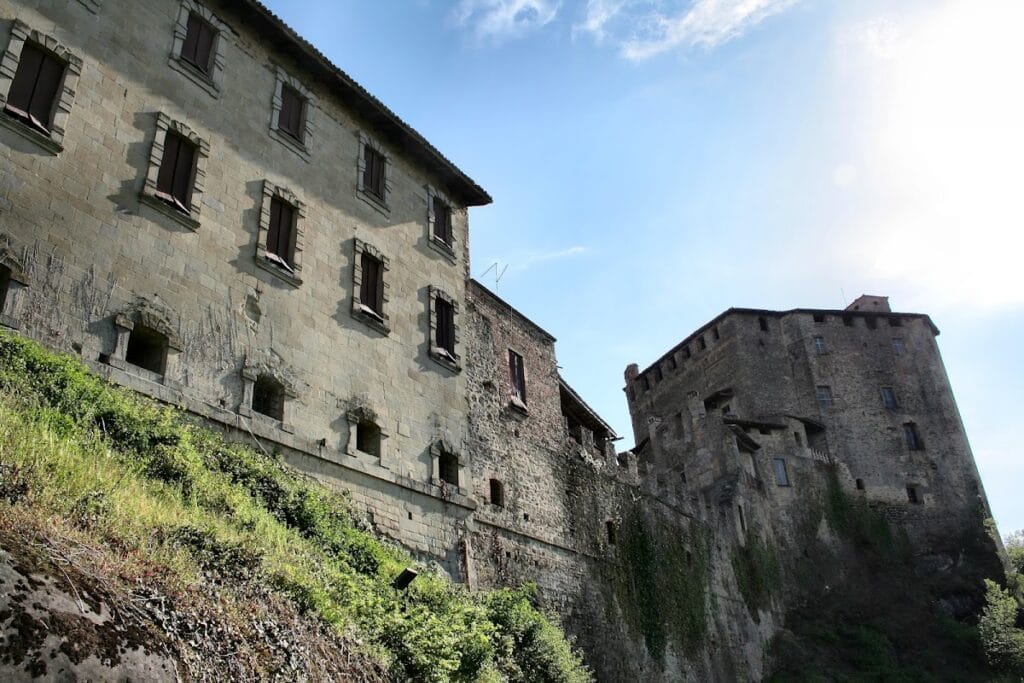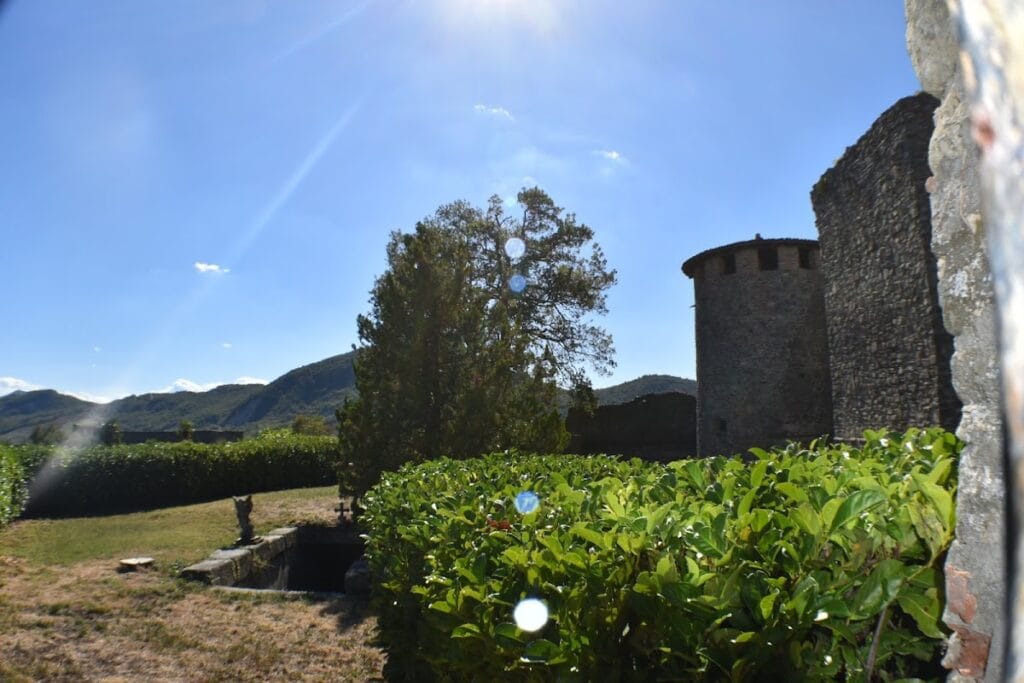Rocca d’Olgisio: A Medieval Fortress in Pianello Val Tidone, Italy
Visitor Information
Google Rating: 4.5
Popularity: Low
Google Maps: View on Google Maps
Official Website: www.roccadolgisio.it
Country: Italy
Civilization: Medieval European
Remains: Military
History
Rocca d’Olgisio is a medieval fortress situated in the municipality of Pianello Val Tidone, Italy. The fortress was initially built by early medieval settlers, with its origins traditionally dated to around the mid-6th century AD, during a time of political instability following the fall of the Western Roman Empire.
According to local legend, the construction of the castle is attributed to a figure known as Giovannato Miles, possibly originating from the Genoa area. His two daughters, Liberata and Faustina, are said to have fled the fortress to establish the Sant’Ambrogio monastery in Como; both daughters were later recognized as saints, linking the site with an early religious tradition. The earliest documented reference to Rocca d’Olgisio, then known as “Castrum Olzisij,” appears in records from either 1037 or 1073, when ownership passed from a canon of Piacenza Cathedral to the monks of San Savino in Piacenza.
Throughout the Middle Ages, the fortress changed hands repeatedly as a result of sales, feudal grants, and territorial disputes involving several noble families, including the Campremoldo, Petraia, Landi, Radati, Fontana, Visconti, Dal Verme, and Sanseverino. A notable episode occurred in 1326, when exiled nobles from the city of Piacenza laid siege to the fortress, only to be repelled by troops loyal to the papacy. The castle entered into the possession of Bernabò Visconti in 1352, a significant Milanese ruler, before being granted to the condottiero Jacopo Dal Verme in 1378. The Dal Verme family maintained control until 1485, when the death of Pietro Dal Verme by poisoning—likely orchestrated by Duke Ludovico Sforza—resulted in the fortress being handed over to Galeazzo Sanseverino.
In the early 1500s, the castle briefly passed into the hands of Bernardino da Corte after being granted to him by King Louis XII of France. Bernardino’s sudden death by poisoning soon after, combined with a prolonged French siege lasting over a year, culminated in the fortress falling due to betrayal within its guards. Later, in 1521, the Dal Verme family regained ownership by purchasing the castle for 6,000 ducats and held it continuously until the mid-19th century. The estate then passed to Giulio Zilieri through marital ties. Over the centuries following, original furnishings and interior appointments were lost through changing ownership.
During World War II, Rocca d’Olgisio served as a strategic headquarters for the II Partisan Division of Piacenza. It endured two assaults by German forces, suffering considerable structural damage, including the partial collapse of its walls. In 1979, the fortress found new stewardship when acquired by the Bengalli family, who undertook restoration and renovation efforts to preserve the site.
Remains
Rocca d’Olgisio occupies a rocky spur at around 546 to 564 meters above sea level, commanding views at the divide between Val Tidone and Val Chiarone. The fortress has an irregular layout adapted to the natural terrain, featuring six successive belts of defensive walls. The approach is from the north, along a road built predominately of granite blocks, which ascend to the main entrance. Granite, known for its hardness and durability, forms the principal building material for the fortress’s walls and access paths.
The complex’s defenses are strongest on its southern side, where gentler slopes demand multiple layers of protection. The entrance to the third ring of defense, which leads directly into the inner courtyard, is marked by a bossed arch—a type of masonry where stones are left rough and projecting—surmounted by a painted depiction of a saint. Inscribed in Latin on the inner jamb is the motto “Arx impavida,” translating as “fearless fortress.” Originally, this entrance featured a drawbridge, evidence of which remains visible in the notches carved into the stone, as well as an iron gate that has since been lost.
Within the central courtyard lies a well approximately 50 meters deep. The shaft is decorated with carved scenes drawn from mythology and legend, enhancing its symbolic as well as practical significance. Local tradition holds that halfway down the well lies a secret underground tunnel, designed as an escape route during times of siege, though this remains a part of the site’s lore.
Facing west across the courtyard are several notable structures, including an oratory dedicated to Saints Faustina and Liberata, connecting to the fortress’s religious associations. Nearby towers a rectangular keep, or mastio, capped by a bell tower. This tower was originally taller; in the early 1800s, it was deliberately lowered to prevent its use as a signaling point for anti-Napoleonic resistance. Decorative features from the late 16th century, commissioned by Cardinal Jacopo Dal Verme III, include a balustrade supported by thirteen carved masks, frescoes, and a staircase, illustrating the ongoing refinement of the castle beyond purely military functions.
Beyond the fortress’s outermost walls, several natural caves have been identified, showing evidence of prehistoric human presence. One cave, reached by a staircase bordered by stone seats that appear crafted by human hands, is traditionally linked to Saints Faustina and Liberata. Inside this cave are steps carved into the rock, a hollowed stone likely serving as an altar, and an inscription reading “ADE” in a stylized script. Another cavern, known as the Cypress or Dripping Cave, contains a rock-cut basin where water slowly drips from fissures above. A local legend asserts this was once a place of torment where prisoners were executed by the slow, relentless dripping of water onto their heads; however, no restraints or physical evidence support this use.
The Black Cave bears traces of prehistoric occupation and has a blackened ceiling probably caused by smoke from fires lit within. Lastly, the Conscripts’ Cave earned its name from its use as a refuge for young men avoiding military conscription during the Napoleonic era’s Kingdom of Italy.
Despite some damage sustained during World War II, including partial wall collapses, restoration efforts since 1979 have stabilized many features of Rocca d’Olgisio. The fortress presents an exceptional example of medieval fortification adapted to a rugged landscape and reflects centuries of military, religious, and social history.










